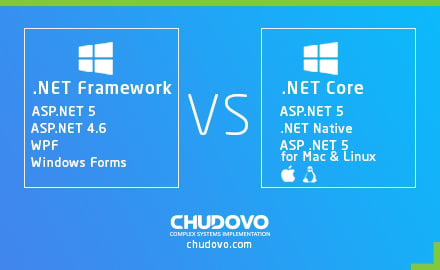.NET Framework – difference between Finalize and Dispose Methods
Resource management and optimum memory allocation – these are very important aspects of writing good and efficient code in the .NET framework. Freeing up your resources the right way holds the key to getting the desired output in terms of speed. While .NET is pretty transparent in freeing up the managed memory & resources, working around the unmanaged resources is what requires a great deal of expertise.
.NET framework provides two distinct ways of freeing up the unmanaged resources – Finalize & Dispose. In this article, we are going to discuss all the details about these two methods, the similarities and differences between them, and how using these can improve the efficiency of the program in .NET. So without much adieu, let’s get straight into it!
How Memory is Managed in .NET?
Whenever you instantiate an object in .NET framework, memory for that object is allocated in the managed heap. It is important to note here that this object remains in the heap as long as it is referenced by any active part of the code. When there’s no reference any longer, the object is moved to the ‘garbage’ memory.
From here, the process of memory deallocation starts, facilitated by the .NET Garbage Collector (GC). Now here’s the catch. Whenever the deallocation process is carried out by the garbage collector, the object’s Finalize() method is called automatically before that. However, in order to call the dispose() method, the developer has to embed it in the code explicitly.
Difference between Dispose and Finalize Methods – Overview
You must have got a fair bit of idea by now, that finalize () and dispose() are the two methods for object clean-up provided in the .NET framework. Both methods can be used for releasing different kinds of unmanaged resources like files, database connections, COM, and more. However, the two methods are far from being similar.
What is finalize?
Theoretically, the finalize() method is a method in .NET development used to implement the ‘finalization’ process. Practically, by calling this method, the Garbage Collector allows objects to clean up any unmanaged resources that they’re holding, before actually destroying the instance.
This is how it works – the garbage collector attempts to call the finalizers of all such objects which it thinks are not in use. This means that the finalizer method is called automatically by the GC on the dead objects before it reclaims the memory occupied by them. However, the finalizer method is not completely reliable, especially in the case of managed resources.
Note – You can not explicitly call either and you can override the Finalize() method. The method is called on its own if you have a destructor for the class.
What is dispose?
Dispose is an explicit method of freeing up unmanaged resources and is generally more reliable as compared to finalize(). This method too, can not be used to free up manageable memory. However, it can be used for effective early reclamation of the unmanaged resources for which the object may be holding references. The greatest advantage is that the dispose method allows for a deterministic release of unmanaged resources.
However, in the case of the dispose() method, the object is not removed from the memory directly. Instead, it will be removed from the memory as per the convenience of the garbage collector, i.e., whenever the Garbage Collector is free. To implement the dispose method, the .NET developer should call GC.Suppress Finalize(this) explicitly, so that the automatic implementation of finalizer() can be prevented.
Similarities Between dispose () and finalize ()
Well, the evident similarity between dispose() and finalizer() is that both of them are methods that can be used for the purpose of freeing up the memory allocated to unmanaged resources. However, there are a whole lot of differences between the tow We provide a side by side comparison between dispose() and finalize(), in the following section.
Side by Side Comparison – dispose () vs finalize ()
Dispose()
- The dispose () method is used primarily to release the unmanaged resources like files, databases, and streams held by an object;
- The dispose method is used to free unmanaged resources only when it is invoked;
- It is the developers’ responsibility to invoke the dispose() method explicitly wherever required, by embedding it into the code;
- Dispose() is a public method;
- Dispose() method is invoked instantly and can be implemented quickly;
- The dispose() method does not have any impact on the program performance.
Finalize()
- The finalize() method is used to perform clean up operations on unmanaged resources held by the current object before the object is destroyed;
- The finalize method is used to free the unmanaged resources every time an object is destroyed;
- The finalize() method is implemented implicitly by the Garbage Collector and not the developer. It follows an automatic implementation;
- Finalize() is a protected method;
- Finalize() method is invoked slowly and may take some time to be implemented;
- The finalize method may impact the performance of the program and make it inefficient.
Conclusion
Clearly, dispose() and finalize() are two quite distinct methods in .NET framework, and dispose() has several practical advantages over finalize(). However, in order to fully harness the advantages of the dispose() method in a project code is not as easy as it may seem! For that, one requires a deep understanding of the concept and wide experience in the .NET framework.






